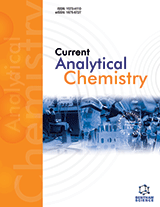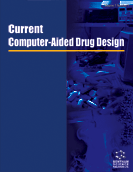摘要
了解人类病理学背后的生物和分子过程是开发治疗或预防它们的创新方法的基础。在可以提供创新疾病模型的技术中,诱导多能干细胞(iPSCs)是最有希望的之一。实际上,该技术的一个应用是患者特异性疾病建模。通过重新编程从可及组织收集的患者细胞获得的iPSC具有在适当刺激下分化成任何人细胞类型的独特能力。特别是,iPSCs技术可用于研究药物不良反应,这是药物发现过程的关键部分。实际上,药物引起的不良反应是导致放弃新候选治疗分子开发的最常见原因之一,增加了药物发现的成本。可用于药物设计以解决药物损耗率并建立创新药理学模型的创新策略可以是在药物发现过程的早期阶段应用iPSC技术来模拟药物诱导的不良事件。在这篇综述中,将讨论最近开发的基于iPSC的疾病模型,特别关注药物不良反应的可用模型,特别是肝/胰腺毒性。.
关键词: 诱导多能干细胞,疾病模型,药物不良反应,儿科患者,治疗个性化,创新药理学模型,肝毒性,胰腺炎。
Current Medicinal Chemistry
Title:Induced Pluripotent Stem Cells as a Model for Therapy Personalization of Pediatric Patients: Disease Modeling and Drug Adverse Effects Prevention
Volume: 25 Issue: 24
关键词: 诱导多能干细胞,疾病模型,药物不良反应,儿科患者,治疗个性化,创新药理学模型,肝毒性,胰腺炎。
摘要: Understanding the biological and molecular processes underlying human pathologies is fundamental in order to develop innovative approaches to treat or prevent them. Among the technologies that could provide innovative disease models, induced pluripotent stem cells (iPSCs) is one of the most promising. Indeed, one application of this technology is patient-specific disease modeling. iPSCs obtained by reprogramming patients’ cells collected from accessible tissues, have the unique capability to differentiate, under an adequate stimulus, into any human cell type. In particular, iPSCs technology can be applied to study drug adverse effects, that is a key part of the drug discovery process. Indeed, drug induced adverse effects are among the most common causes that lead to abandon the development of new candidate therapeutic molecules, increasing the cost of drug discovery. An innovative strategy that could be used in drug design to solve drug attrition rate, and to establish innovative pharmacological models, could be the application of iPSCs technology in the early stage of the drug discovery process to model druginduced adverse events. In this review, recently developed disease models based on iPSCs will be discussed, with a particular focus on available models of drugs’ adverse effect, in particular hepatic/pancreatic toxicity.
Export Options
About this article
Cite this article as:
Induced Pluripotent Stem Cells as a Model for Therapy Personalization of Pediatric Patients: Disease Modeling and Drug Adverse Effects Prevention, Current Medicinal Chemistry 2018; 25 (24) . https://dx.doi.org/10.2174/0929867324666170804150131
| DOI https://dx.doi.org/10.2174/0929867324666170804150131 |
Print ISSN 0929-8673 |
| Publisher Name Bentham Science Publisher |
Online ISSN 1875-533X |
 60
60 6
6 1
1
- Author Guidelines
- Graphical Abstracts
- Fabricating and Stating False Information
- Research Misconduct
- Post Publication Discussions and Corrections
- Publishing Ethics and Rectitude
- Increase Visibility of Your Article
- Archiving Policies
- Peer Review Workflow
- Order Your Article Before Print
- Promote Your Article
- Manuscript Transfer Facility
- Editorial Policies
- Allegations from Whistleblowers
- Announcements
Related Articles
-
Administration of Exogenous Surfactant and Cytosolic Phospholipase A2α Inhibitors may Help COVID-19 Infected Patients with Chronic Diseases
Coronaviruses Psychosocial Risk Factors Related to Ischemic Heart Disease in Women
Current Pharmaceutical Design Aldose Reductase: A Novel Target for Cardioprotective Interventions
Current Drug Targets The Value of Repetitive Transcranial Magnetic Stimulation (rTMS) for the Treatment of Anxiety Disorders: An Integrative Review
CNS & Neurological Disorders - Drug Targets Hemopressin Peptides as Modulators of the Endocannabinoid System and their Potential Applications as Therapeutic Tools
Protein & Peptide Letters Microcirculatory Endothelial Dysfunction During Endotoxemia - Insights into Pathophysiology, Pathologic Mechanisms and Clinical Relevance
Current Vascular Pharmacology BST-2 Expression in Human Hepatocytes is Inducible by All Three Types of Interferons and Restricts Production of Hepatitis C Virus
Current Molecular Medicine Tissue Distribution and Pharmacodynamics: A Complicated Relationship
Current Drug Metabolism Serotonin Transporter Gene Variants and Behavior: A Comprehensive Review
Current Drug Targets Coenzyme Q10 in Neuromuscular and Neurodegenerative Disorders
Current Drug Targets Cannabinoid 1 (CB1) Receptor - Pharmacology, Role in Pain and Recent Developments in Emerging CB1 Agonists
CNS & Neurological Disorders - Drug Targets Arrhythmias and Left Ventricular Hypertrabeculation/Noncompaction
Current Pharmaceutical Design Current Concepts for Optimizing the Therapeutic Index of Glucocorticoid Receptor Ligands for Oral and Inhalative Use: Basic Considerations and Clinical Reality
Current Medicinal Chemistry - Anti-Inflammatory & Anti-Allergy Agents Solution NMR Study of the Transmembrane Domain of Single-Span Membrane Proteins: Opportunities and Strategies
Current Protein & Peptide Science Cannabinoids
Current Drug Targets - CNS & Neurological Disorders Roles of NHERF1/EBP50 in Cancer
Current Molecular Medicine Defining Peptide Sequences: From Antigenicity to Immunogenicity Through Redundancy
Current Pharmacogenomics Selective Removal of Macrophages in Atherosclerotic Plaques as a Pharmacological Approach for Plaque Stabilization: Benefits Vs. Potential Complications
Current Vascular Pharmacology Mitochondrial Membrane Lipids in Life and Death and their Molecular Modulation by Diet: Tuning the Furnace
Current Drug Targets Anti-Atherosclerotic Therapy Based on Botanicals
Recent Patents on Cardiovascular Drug Discovery


























